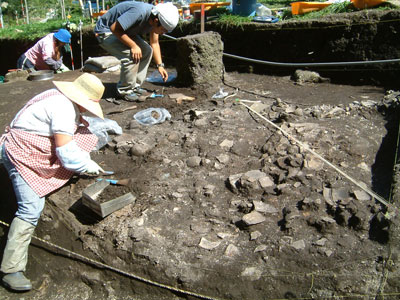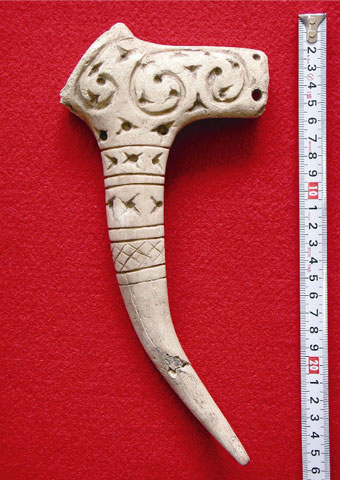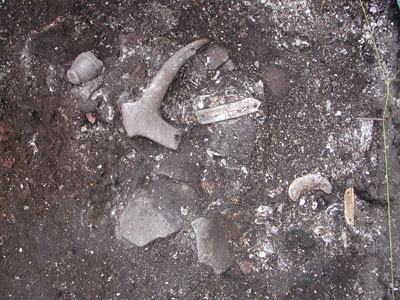Terashita Ruins (Hashikami Town designated buried ruins)

Terashita ruins shell mound survey scene
(Photo: Hashikami Town Board of Education)
The Terashita ruins date from the early late Jomon period to the early Yayoi period (approximately 3,000 to 2,300 years ago).
In 1968, a large amount of pottery and pottery fragments were unearthed when the Hashikami Village road was being constructed. A survey was conducted in 1973, and it was found to be an important archaeological site with shell middens. A further investigation was conducted in 2004 in conjunction with the widening of the forest road, and the remains of 11 pit dwellings, 11 earthen piles, and one shell mound from the middle to late Jomon period were confirmed.
Pottery (pedestal bowl-shaped pottery, jar-shaped pottery, bowl-shaped pottery, what appear to be the hands of clay figurines, etc.), stone tools (stone axes, etc.), and bone and horn tools (bone needles, ornaments, etc.) have been excavated, and in particular, the shell mound has revealed many bone and horn tools made from the bones and shells of animals, birds, and fish.
Among the bone and antler tools found were tools such as spatulas, needles, fishhooks, harpoons, root tongs, and cusp-shaped bone and antler tools, as well as ornaments such as necklaces and hairpins. Of particular note was what appears to be a waist ornament made from deer antlers, which was excavated in an almost complete state.
These excavated items were designated as Hashikami Town Cultural Properties in March 2008. In particular, the 141 bone and horn tool artifacts have a clear era and are rare across the country for such a large number to be identified together. They are considered to be extremely important relics for understanding the changes in bone and horn tool artifacts from the late Jomon period, and were designated as Aomori Prefecture Treasures (Archaeological Materials) in April 2021.



